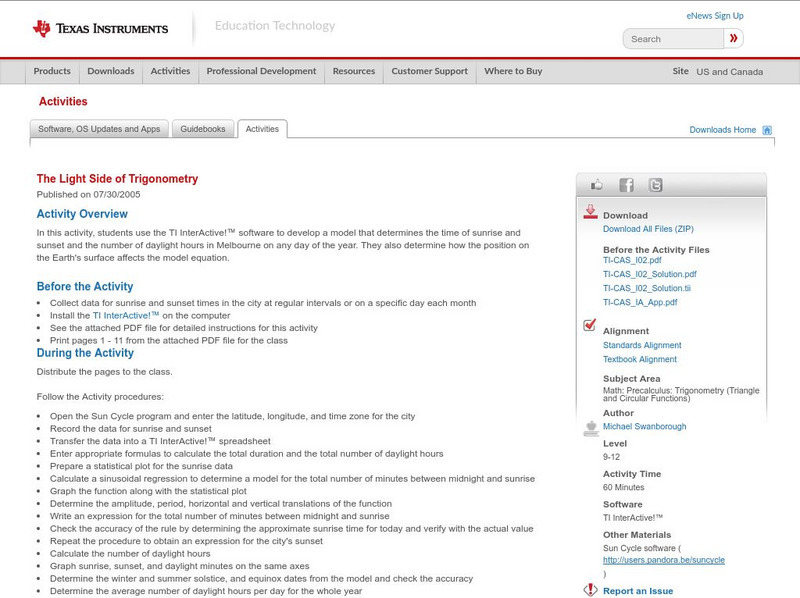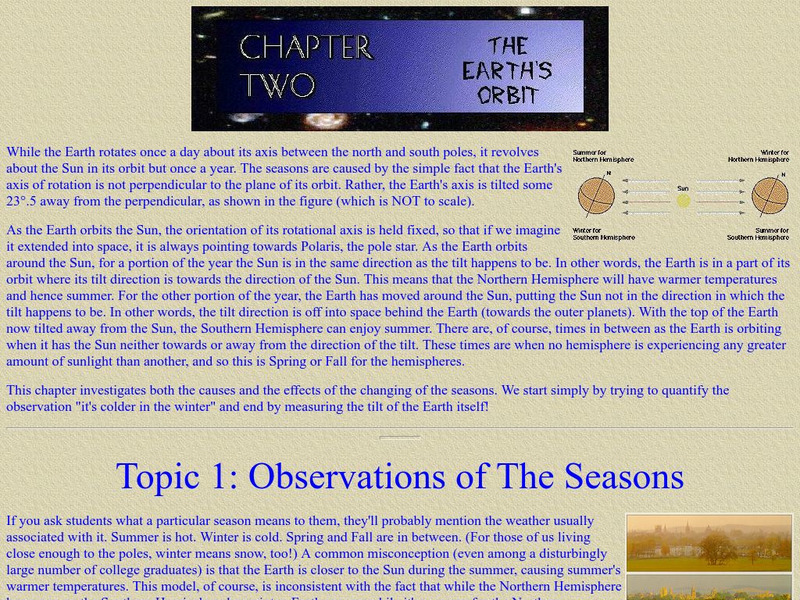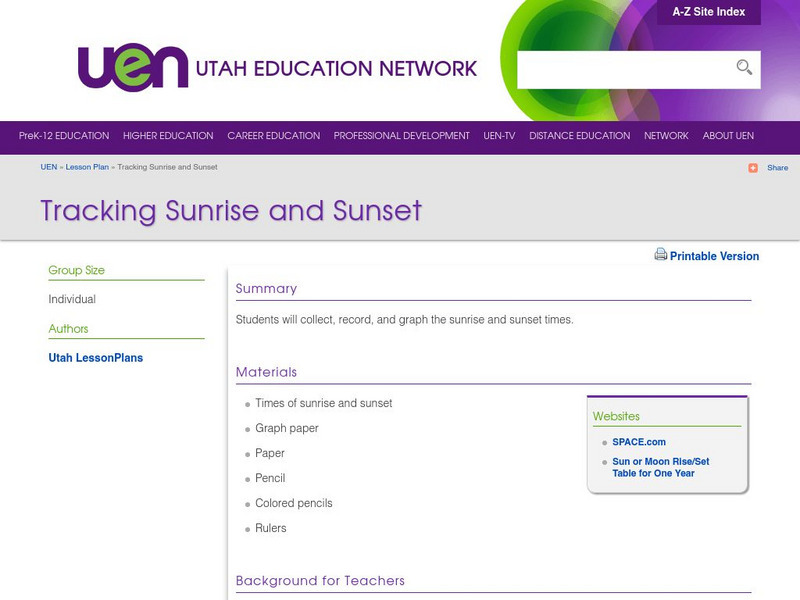E-learning for Kids
E Learning for Kids: Science: Center of the Ocean: The Sun, the Earth, and the Moon
Nita lives on Coco Island in the Indian Ocean, and is learning more about the Sun, the Earth, and the Moon. Join her and learn about day and night.
E-learning for Kids
E Learning for Kids: Science: Egypt: Why Does the Sun Appear to Move Across the Sky?
Join Imhotep in his journey to figure out where the sun goes at night.
PBS
Pbs Learning Media: Sunrise or Sunset?
What difference does a sunrise or sunset make in your mood and which one do you prefer?
Texas Instruments
Texas Instruments: Light and Day
In this activity, students will collect temperature and light readings over a 25 hour time period and explore relationships between and within the data. They will discover the relationships of temperature with sunrise and sunset and look...
Texas Instruments
Texas Instruments: The Light Side of Trigonometry
In this activity, students use the TI InterActive! software to develop a model that determines the time of sunrise and sunset and the number of daylight hours in Melbourne on any day of the year. They also determine how the position on...
University of Illinois
University of Illinois Urbana Champaign: Ww2010: Sunset Colors
This site examines the optics of the atmosphere and explains why we see different colored sunsets.
Science Education Resource Center at Carleton College
Serc: Creating Your Own Sunset
Students observe a physical example of how the sunrises and sunsets show color in the sky.
NOAA
Noaa: Solar Calculators
This resource allows users to find sunset/sunrise calculations based on latitude and longitude for various locations. Provides a glossary of related terms and an explanation of their calculations.
Harvard University
Eyes on the Sky, Feet on the Ground: The Earth's Orbit
Students perform many inquiry activities related to Earth's orbit. Included are recording daily temperatures, observing the sun's path over several weeks, tracking sunrise and sunset times, and angle of sunlight. Diagrams make lessons...
Utah Education Network
Uen: Tracking Sunrise and Sunset
Young scholars will collect, record, and graph the sunrise and sunset times to see how they change throughout the year.
Other
Edu Media: 2. Make Observations at Different Times of Year
Choose from four animations that show why the amount of daylight is different throughout the year. Topics include the seasons, the sun's apparent path, and days and nights over the year.
E-learning for Kids
E Learning for Kids: Science: France: What Makes Day and Night?
Papa and his son Pierre work at a grape farm. Pierre loves to go out and play as soon as the sun comes up. What do you know about the sun and the Earth?
CK-12 Foundation
Ck 12: First Grade Science: Sky Patterns
[Free Registration/Login may be required to access all resource tools.] Describes patterns that can be found in the movement of the Sun, Moon, and stars.
Alabama Learning Exchange
Alex: Sun, Earth, and Moon: Calendar of Events
During this lesson learners are going to take a look at moon phases and sunrise-sunset times in order to learn about daylight hours. Students discover that we do not always have the same amount of daylight each day. This lesson is best...
PBS
Pbs Learning Media: Sky Patterns: Sun, Moon, and Stars
Observe the regular, predictable patterns of the Sun, Moon, and stars in the sky in this media gallery from WGBH. Interact with the animated storybook to observe and predict patterns of the Sun, Moon, and stars over a day and analyze...
US Navy
Astronomical Applications Department: Complete Sun and Moon Data for One Day
You can obtain the times of sunrise, sunset, moonrise, moonset, transits of the Sun and Moon, and the beginning and end of civil twilight, along with information on the Moon's phase by specifying the date and location in one of the two...














